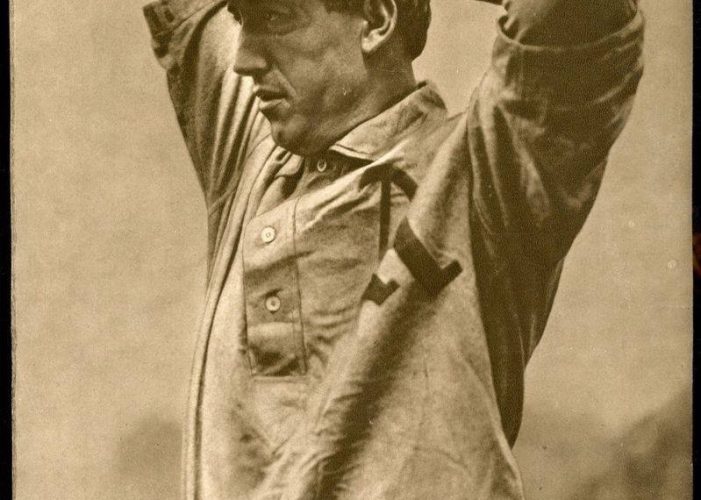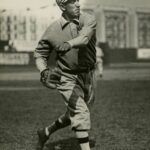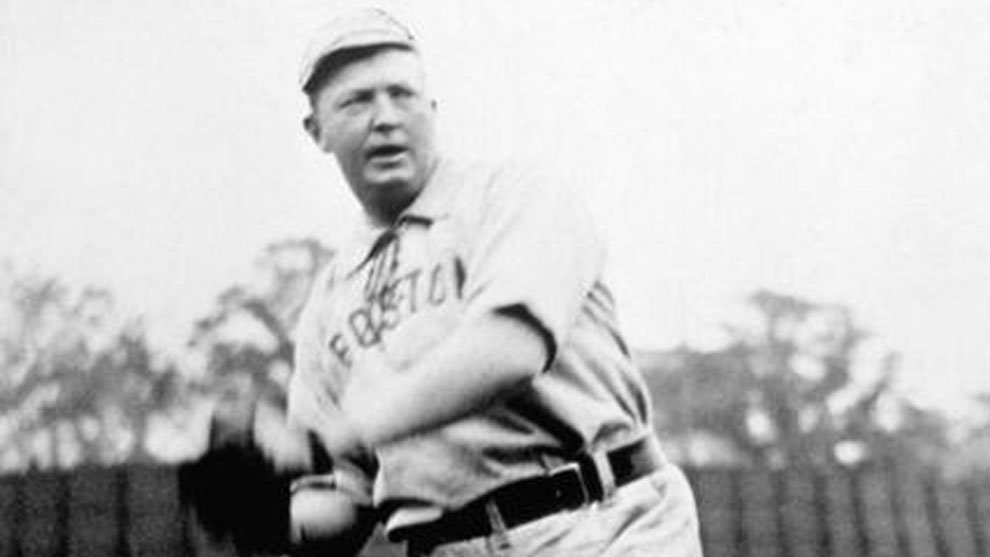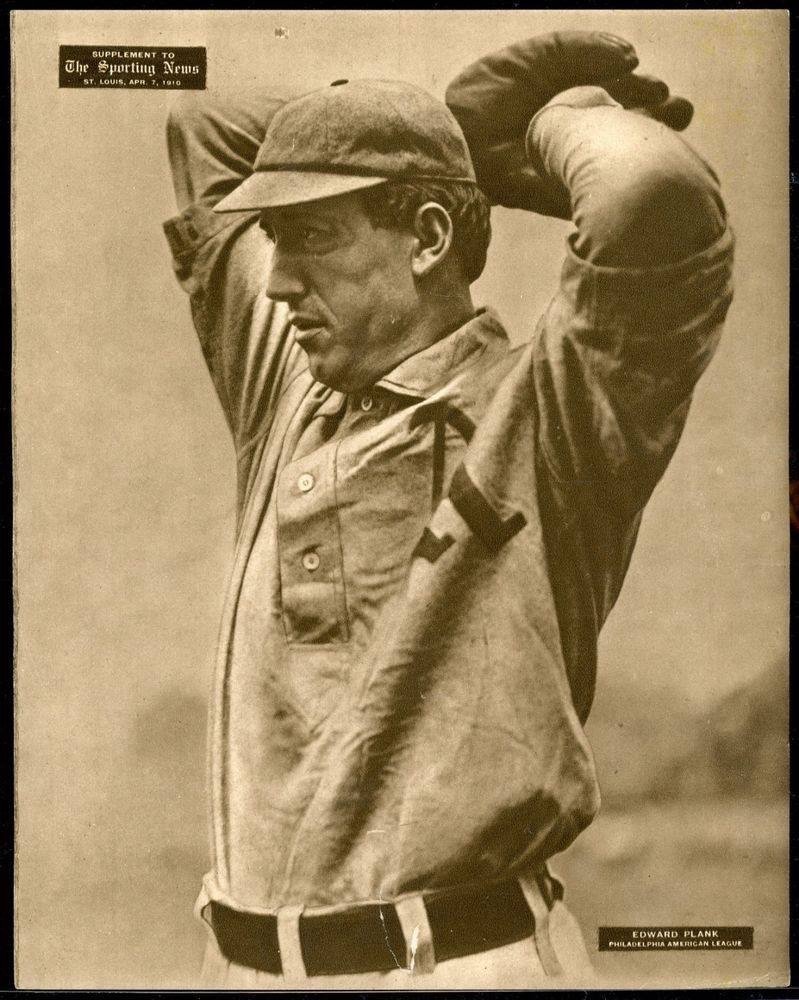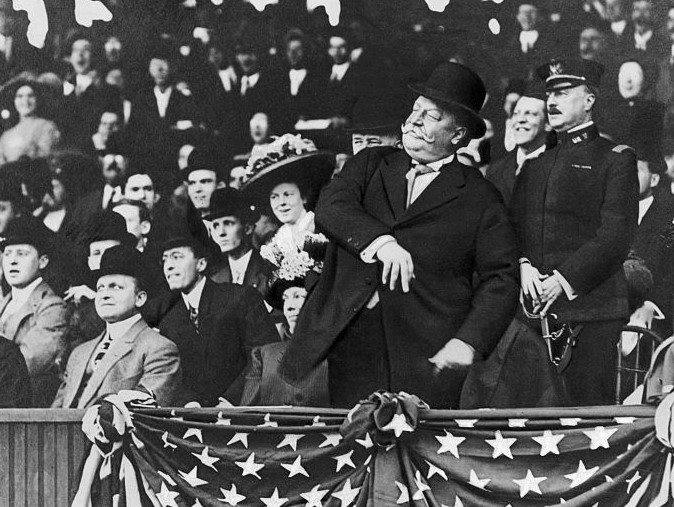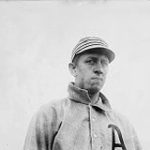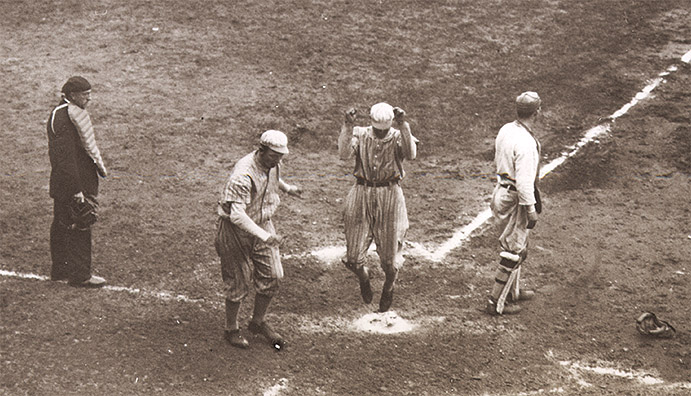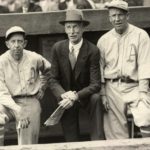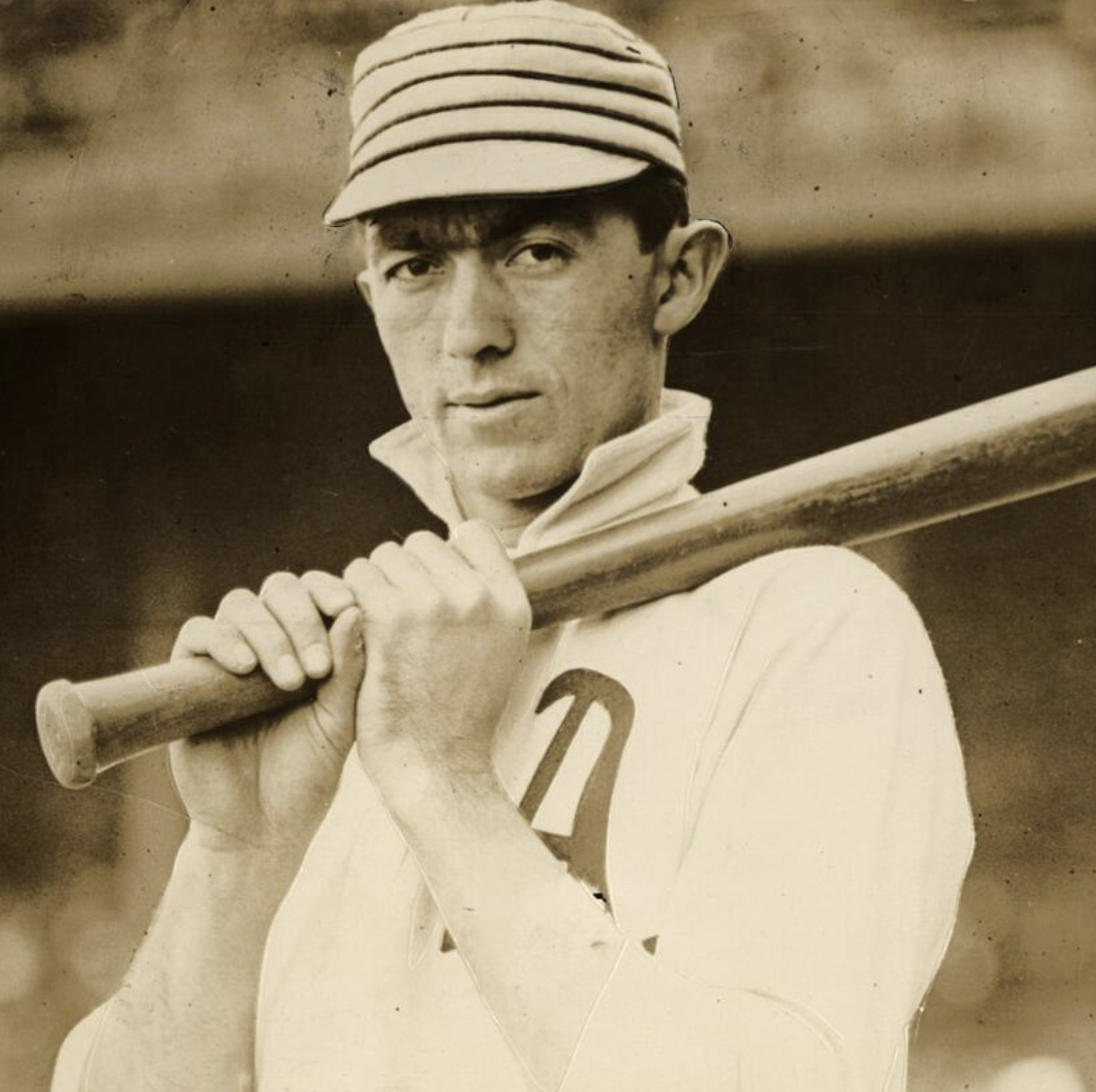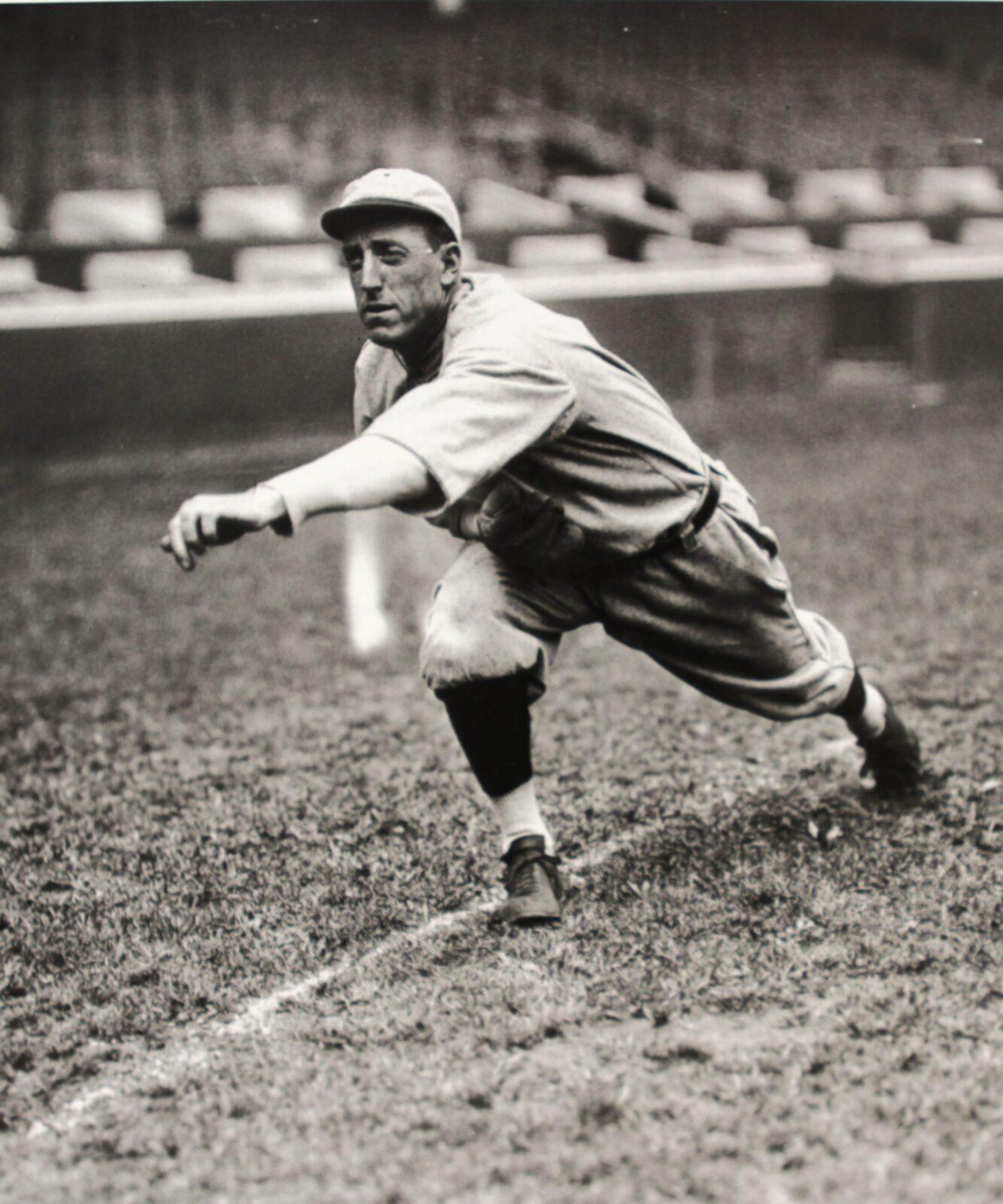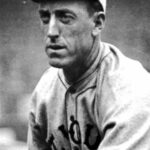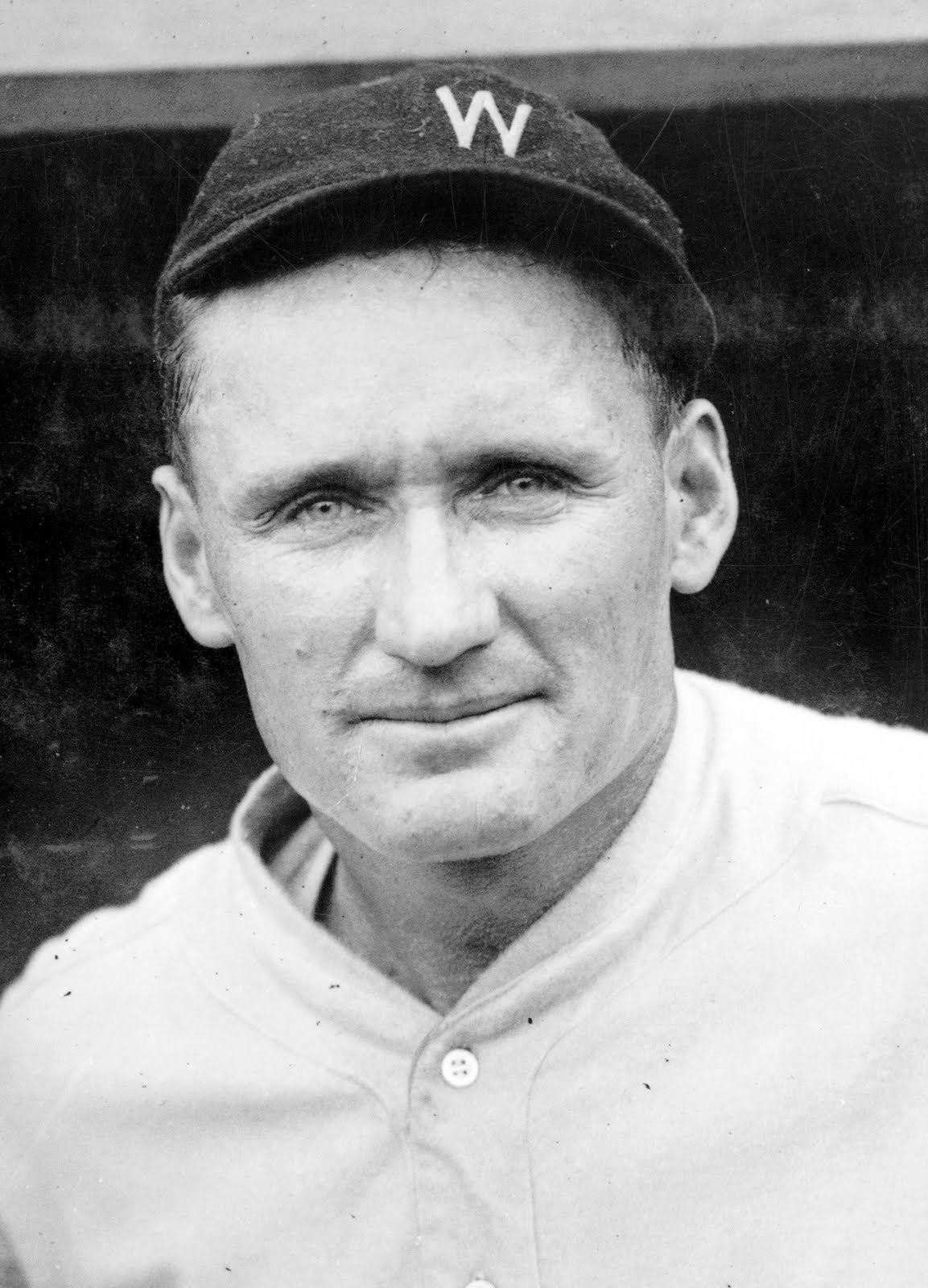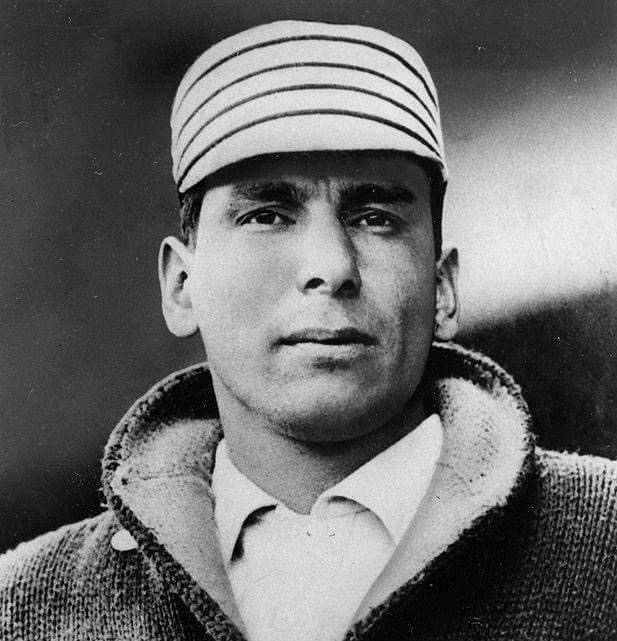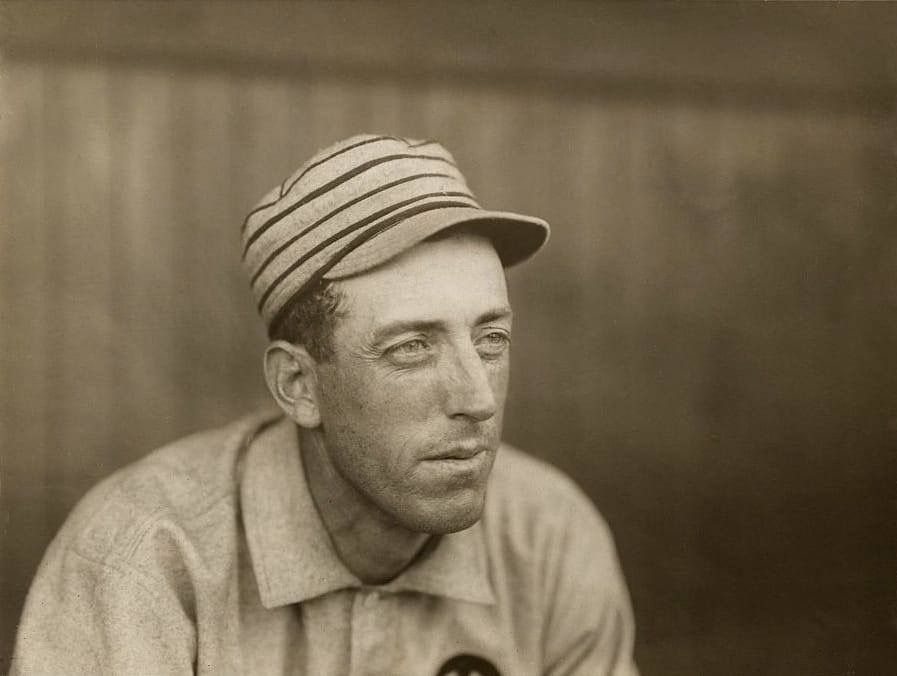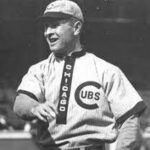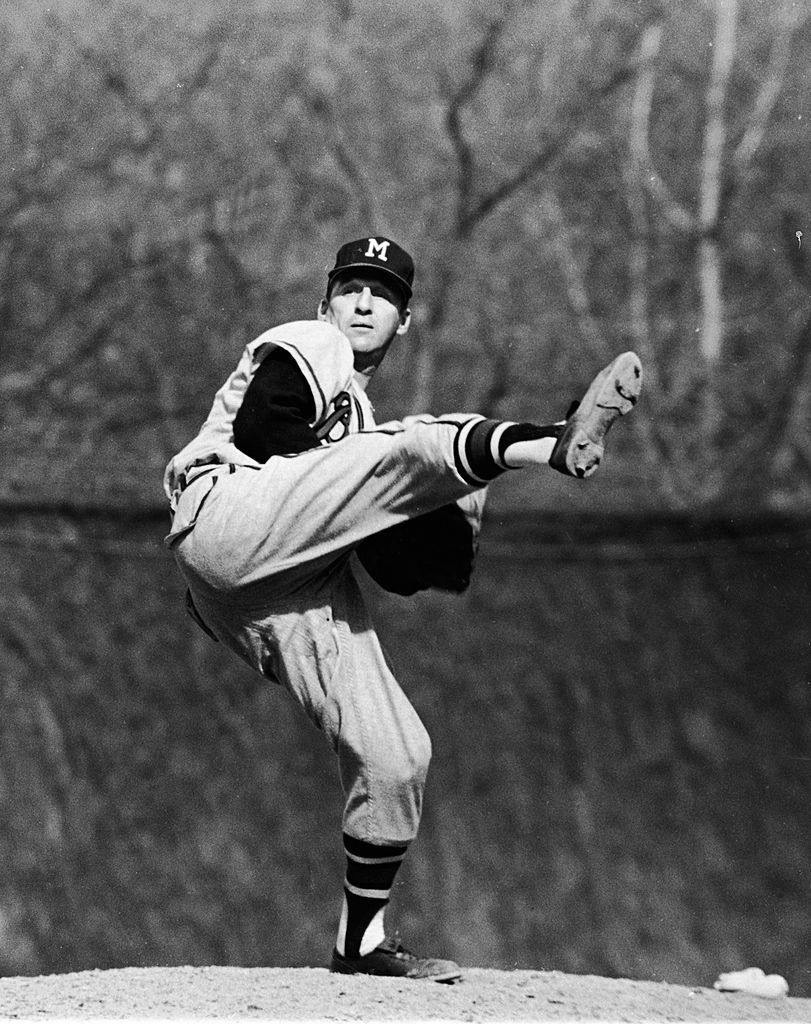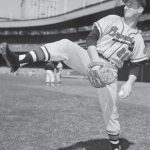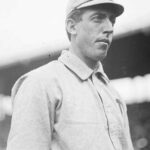Eddie Plank
Position: Pitcher
Bats: Left • Throws: Left
5-11, 175lb (180cm, 79kg)
Born: August 31, 1875 in Gettysburg, PA
Died: February 24, 1926 in Gettysburg, PA
Buried: Evergreen Cemetery, Gettysburg, PA
High School: Gettysburg Academy (Gettysburg, PA)
School: Gettysburg College (Gettysburg, PA)
Debut: May 13, 1901 (2,272nd in major league history)
Last Game: August 6, 1917
vs. WSH 10.1 IP, 5 H, 3 SO, 3 BB, 1 ER, L
Hall of Fame: Inducted as Player in 1946. (Voted by Old Timers Committee)
Induction ceremony in Cooperstown held in 1947.
View Eddie Plank’s Page at the Baseball Hall of Fame (plaque, photos, videos).
Full Name: Edward Stewart Plank
Nicknames: Gettysburg Eddie
View Player Info from the B-R Bullpen
View Player Bio from the SABR BioProject
Nine Players Who Debuted in 1901
Terry Turner
George McBride
Wid Conroy
Hobe Ferris
Jim Delahanty
Germany Schaefer
George Browne
Davy Jones
Matty McIntyre
The Eddie Plank Teammate Team
C: Wally Schang
1B: George Sisler
2B: Eddie Collins
3B: Frank Baker
SS: Jack Barry
LF: Topsy Hartsel
CF: Socks Seybold
RF: Baby Doll Jacobson
SP: Rube Waddell
SP: Chief Bender
SP: Jack Coombs
SP: Joe Bush
RP: Herb Pennock
M: Connie Mack
Notable Events and Chronology
Biography
Eddie Plank had never played baseball before entering college. He was signed by the Athletics as an elderly rookie of 25 when he graduated from Gettysburg in the American League’s first year, 1901. He became the principal lefthander for the first generation of great Athletics teams. Until Warren Spahn, he was the winningest lefthander in ML history. When he jumped to the Federal League’s St. Louis Terriers (as Connie Mack, dismantling his 1914 losers, sought to deal Plank to the Yankees), he had won 285 games for Philadelphia – 23% of the team’s total victories.
Like many turn-of-the-century pitchers, Plank threw with finesse, mixing a fastball with a sidearm curve (his “cross-fire”) that cut the plate at an angle disconcerting to batters. He had superb control (under two walks per nine innings), low ERA (including 1.79 in his final season, 1917), 69 shutouts (fifth all-time), and 412 complete games.
He was a serious, self-contained man, and annoyingly deliberate on the mound. Although the times of some of his World Series games do not seem slow by today’s standards – 1:55, 1:46, and 2:33 for a seven-run, 10-inning contest – he evidently irritated players, fans, and sportswriters.
He had a hard-luck Series record. In four of his five losses, the A’s were shut out, and in 1910 he was sidelined by a sore arm and did not pitch at all. The arm recovered by the next spring, enabling Plank to post two of his finest seasons: 23-8 in 1911, and 26-6 in 1912, for winning percentages of .742 and .813.
After winning 21 for the St. Louis Terriers in 1915, the Federal League collapsed, and Plank was assigned to the Browns. In 1918 he was packaged with Del Pratt and $15,000 in a trade to the Yankees for Urban Shocker (and four others) but chose to retire rather than report.
Factoids, Quotes, Milestones and Odd Facts
Played For
Philadelphia Athletics (1901-1914)
St. Louis Terriers (1915)
St. Louis Browns (1916-1917)
Similar: None
Linked: Chief Bender, Doc Powers
Best Season, 1905
Plank started 41 games and finished every one of them. He finished second in strikeouts to teammate Rube Waddell. Plank’s mark was 24-12 with a 2.26 ERA.
Post-Season Appearances
1905 World Series
1911 World Series
1913 World Series
1914 World Series
Description
Eddie Plank, who pitched from 1901 to 1917, made it to the Hall of Fame using stall tactics, but he didn’t have any routine to go with it. With a batter waiting at the plate, Plank would move an inch forward on the mound, then half an inch back, as if trying to perfect the relationship between himself and the world. When he finally felt the situation was right, he’d pitch, and not a second sooner. When it was wrong, when the arrangement suffered some invisible imbalance, he’d start over. An inch backwards. Three inches to the side. At other times, he would just stand and stare, like a Shaker at an old-time wedding, until the spirit moved him. He’d just stand there. He’d wait so long that batters forgot where they were. Their eyes would water. They’d wonder about their contract, their girl in the next town, the weather on Venus. They’d wonder whether or not Plank had finally succumbed to some kind of cataleptic fit. And then the ball would be behind them. Strike one. Plank’s motive was direct and simple: make the hitter impatient, because impatient hitters swing at bad pitches.
— Kirk Robinson
Milestones
-
- September 11, 1915: 300th Win…
-
- September 11, 1915: 300th Win…
Transactions
Before 1915 Season: Jumped from the Philadelphia Athletics to the St. Louis Terriers; Before 1916 Season: Jumped from the St. Louis Terriers to the St. Louis Browns; January 22, 1918: Traded by the St. Louis Browns with Del Pratt and $15,000 to the New York Yankees for Les Nunamaker, Fritz Maisel, Nick Cullop, Urban Shocker, and Joe Gedeon.
Data courtesy of Restrosheet.org
The Death of Doc Powers
For virtually eight seasons, from 1901 to 1908, Doc Powers was Eddie Plank’s personal catcher. Powers didn’t hit much, but he was a decent defensive receiver with a strong, accurate arm. Plank and Powers were good friends. On April 12, 1909, the A’s played their first game in new Shibe Park. Plank was on the mound and Powers was behind the plate. In the seventh inning, with Philadelphia leading the visiting Red Sox, Powers chased a foul pop fly in back of the plate and collided with the grandstand wall. Though he lay dazed for several minutes, Powers remained in the game, which Plank won, 1-0. After the game Powers was hospitalized and underwent three operations to stop internal bleeding. He died on April 26.
Mack Compares His Three Southpaws
Connie Mack managed some of baseball’s greatest left-handed pitchers. He saw the best come and go, but in 1931, he compared his top three southpaws for an article in The Sporting News.
“Waddell was a remarkable pitcher. We all know that. But he wasn’t dependable. He didn’t take care of himself. Grove isn’t that way. Lefty’s always in condition. He’s as dependable as the tides… He’s faster than Waddell, too.”
“Don’t think now that I’m taking anything away from Rube. He had the most perfect overhand delivery I have ever seen on a lefthander. When he delivered the ball he brought his hand down right alongside his head. he threw his curve that way as well as his fast one.”
Mack didn’t forget about one of his favorite big-game pitchers, either.
“Eddie Plank was a side-arm pitcher.Occasionally, he’d throw a fastball overhand. Grove, I’d say, has a delivery sort of in netween Waddell’s and Plank’s – half overhand, half side-arm.
“I put Lefty above Plank not becaue he is more dependable, for Eddie was a mighty careful-living fellow, but because Lefty is stronger. he can stand more work than Eddie, who was frail and light.”
Best Strength as a Player
Control. Plank walked just over two batters per nine innings.
Largest Weakness as a Player
This isn’t really a weakness, but Plank was a notorious headhunter in his day, leading the league in hit batsmen twice, and finishing among league leaders several times. He loved to brush batters off the inside of the plate.
Other Resources & Links

